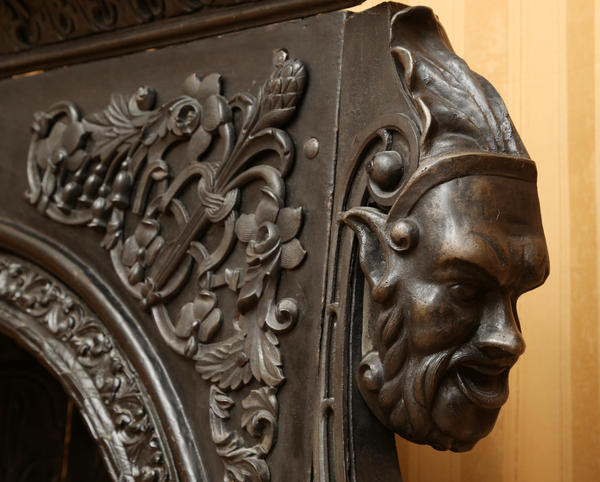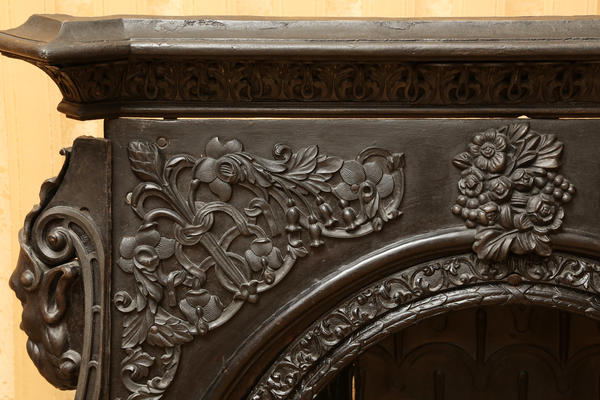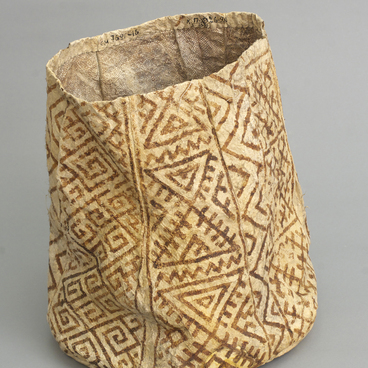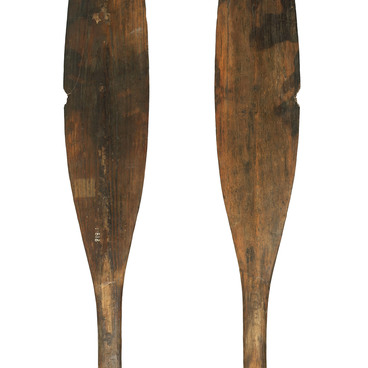The fireplace belonged to the Yekaterinburg house of the engineer Nikolay (Nicholas) Ipatiev, where the Royal Family stayed from March 31 to July 16, 1918. It was made of cast iron at the Kasli Plant in the Chelyabinsk Region. Ipatiev House was one of the most comfortable mansions in Yekaterinburg at that time, and the black cast fireplace was installed in the dining room in the first floor. In this very dining room Emperor Nicholas II, his Family, and close associates were spending most of their time during their confinement.
Fireplace from the House of the N.N. Ipatiev
Creation period
Late XIX - early XX century
Dimensions
120x160x43 cm
120х160х43 cm
120х160х43 cm
Technique
Cast iron, casting
Exhibition
1
Open in app#4
Fireplace from the House of the Engineer N.N. Ipatiev.
#5
#6
The general structure of the fireplace and its decorations are typical for the Baroque style: the sides of the portal are adorned with satyr masks, and the fireplace insert is ornamented with a seashell motif. The attached openwork fragments demonstrate floral patterns. Today, fireplaces of this type are called Ipatiev (Rus. Ipatievsky). They were originally produced at the Kasli Plant in the second half of the XIX century, and were listed in catalogues as Fireplace №5.
#7
Satyr masks on the side pillars of the fireplace portal.
#8
Floral ornament on fireplace overlay.
#9
The Royal Family was quartered in the two-storey Ipatiev House, which on this occasion was dubbed The House of Special Purpose (Rus. abbreviation DON). The mansion was enclosed with a double fence, its windows were painted white, and it was forbidden to open them even for ventilation. Armed guards were on watch inside and outside the house day and night.
#3
Photo card, 1927-1937. Issued by the Ural Regional Museum of the Revolution in Sverdlovsk. View of the house of the engineer Nikolay Ipatiev during the confinement of the Imperial Family. Photo taken in May–July of 1918.
#2
Dining room in the house of the engineer Nikolay Ipatiev. 1918. Yekaterinburg
In the first quarter of the XX century, Yekaterinburg did not have a public water supply and sewage system, while Ipatiev House even had a private bathroom. What a bliss: for the first time in three weeks I took a bath, wrote Nicholas II in his diary. The Romanovs were given four rooms to live in: the dining room with the fireplace, its two adjacent rooms, and a living room. The Prisoners were spending most of their time in the dining room. There they read, wrote letters, did needlework, and played cards. Nicholas II was a heavy smoker: since it was prohibited to open the windows, he had to smoke sitting by the fireplace.
#10
The Imperial Family was treated almost as if they were in jail: their food supply was limited, they were not allowed to walk outside for more than an hour a day, and having visitors was banned. Bolsheviks were inspecting all letters written by the Imperial Family members. On the night of July 16-17, Emperor Nicholas II and his Family were shot in the basement of the Ipatiev House.
#11
Museum employees removed the fireplace from the mansion on September 13, 1977, because it had been decided to demolish the building. By order of Alexander Balchugov, director of the Sverdlovsk History and Revolution Museum, the fireplace was first taken to the church on the Ascension Hill (Rus. Voznesenskaya Gorka), and then it became part of the museum collection. Apart from the fireplace, only small details remained from the Ipatiev House: window bars, a piece of a border edging, moulding and wallpaper fragments. The museum at the Church on Blood exhibits the bark of a tree that grew near the house where the last Russian Emperor was assassinated.
#12
O.E. Kler Sverdlovsk Regional Ethnography Museum
read morehide
00:00
00:00
1x
Fireplace from the House of the N.N. Ipatiev
Creation period
Late XIX - early XX century
Dimensions
120x160x43 cm
120х160х43 cm
120х160х43 cm
Technique
Cast iron, casting
Exhibition
1
Open in app
Share







